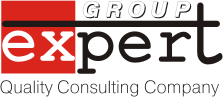| Section: |
7.4.2 e |
Section Title: Requirements for Acceptance
|
| 9100 C Clause |
7.4.2 Purchasing Information:
Purchasing information shall describe the product to be purchased, including, where appropriate
e) requirements for design, test, inspection, verification (including production process verification), use of statistical techniques for product acceptance, and related instructions for acceptance by the organization, and as applicable critical items including key characteristics, |
| Generic Expectation |
It is expected, as part of the product realization purchasing process, that the organization(Buyer) clearly defines, and communicates applicable product and verification requirements to a supplier.
The requirements for design, test, inspection, verification (including production process verification), use of statistical techniques for product acceptance, and related instructions for acceptance by the organization, and as applicable critical items including key characteristics,should be documented, agreed to by both parties and records maintained. Reference AS9100C 7.2.2 Review of Requirements Related to the Product. The design requirements are applicable to the Suppliers contracted by the Buyer to design product and are intended to ensure the structure is compatible with the Buyer's design practices and to define the product performance parameters. The test requirements ensure the final product operates in accordance with the end user's needs. In order to ensure the product complies with the design requirements, the Supplier develops an inspection plan and means of product/process verification like FAI, process certification, etc. The inspection plan can be based on sampling inspection if and when the Buyer agrees with the Supplier sampling plan. The Supplier is expected to comply with the requirements applicable to critical items as defined through design or contract; the Key Characteristics process is documented in AS9103.
The requirements of this specific clause are typically contained in contractual documents and specifications. The understanding of all requirements are extremely important before contract acceptance. |
| Product Type: |

COTS/Standards |

Raw Material |

Build-to-Print |

Supplier Design |
| Specific Expectation |
Organization (Buyer) |
Buyer should ensure all product requirements and performance characteristics are defined in the PO/contract with the Supplier.(including production process verification), use of statistical techniques for product acceptance, and related instructions for acceptance by the organization, and as applicable critical items including key characteristics. |
Buyer should ensure all material requirements are defined in the PO/contract with the Supplier. |
Buyer should ensure all general requirements are stated in the contract and product requirements are defined and released (i.e.: drawings/models, specifications, test procedures). Product inspection and Buyer acceptance requirements are defined in the contact, PO clauses or in specific quality documents. Ensure the Supplier understands the requirements and is capable of meeting them. |
Buyer should ensure all performance and product requirements are defined. Typically this is communicated through a Buyer document defining all product characteristics, performance criteria and design requirements. Ensure the Supplier understands the requirements and is capable of meeting them. |
| |
|
Method of Buyer on-site source inspection, delegation of inspection authority program and statistical sampling inspection criteria are flowed to and clearly understood by Supplier through the contact, PO clauses or quality documents. |
| |
|
Special approvals (i.e.: AS9100, Nadcap, civil aviation authorities, etc.) and adherence to quality specifications (i.e.: AS9102, AS9103, etc.) is flowed to and clearly understood by Supplier through contractual documents, PO clauses or quality documents. |
| Supplier (Seller) |
Ensure product meets contractual document and design requirements. Maintain required documentation, identification and traceability. |
Ensure product requirements are understood. Ensure capability meets Buyer requirements. |
Ensure product and performance requirements are understood. Ensure capability meets Buyer requirements. |
| |
|
Establish communication process with Buyer. A thorough review of customer documentation should be conducted. If requirements are unclear, communicate and revise documentation.
Ensure product meets contractual document and design requirements. Maintain required documentation, identification and traceability |
| Supplier should ensure compliance with the Buyer requirements for delivery and post-delivery (service, warranty); known unspecified Buyer requirements necessary for the product intended use; statutory and regulatory requirements applicable to the product. |
| Documentation to demonstrate conformance to expectation (what the auditor would look for) |
Organization (Buyer) |
Documented procurement process. |
| Contractual documents, PO clauses and/or quality documents defining requirements. |
| |
|
Documented product requirements (i.e. drawings, 3D models, specifications, test acceptance procedures, specific list of tools, fixtures, inspection gages, etc.) |
Documented product requirements (i.e. drawings, 3D models, specifications, test acceptance procedures, etc.) |
| Supplier acknowledgement of contract and/or PO per Buyer's process. |
| Audit reports assessing Supplier compliance to Buyer's requirements. |
| Procedures, desktop or work instructions. |
| Documented procedure for quality requirements flowdown to Suppliers. |
| Supplier (Seller) |
Documented evidence of compliance with the Buyer requirements for delivery and post-delivery (service, warranty); known unspecified Buyer requirements necessary for the product intended use; statutory and regulatory requirements applicable to the product. |
| Examples (Best Practices) |
Organization (Buyer) |
|
|
|
|
| Supplier (Seller) |
|
|
|
|
